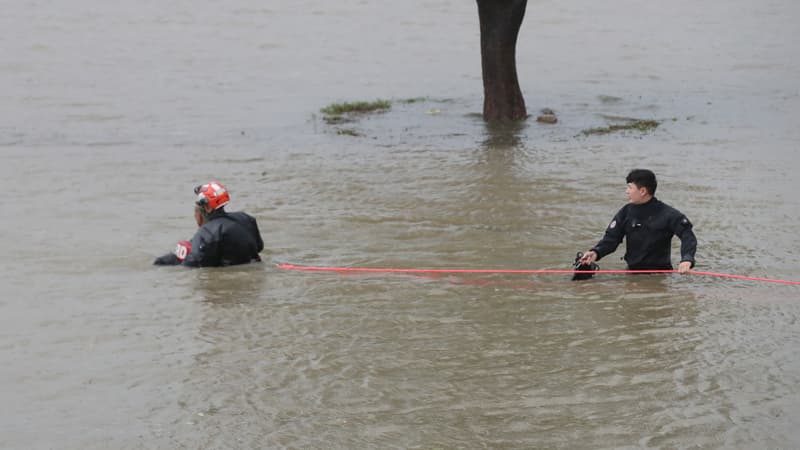Typhoon Hinnamnor slammed into South Korea on Tuesday morning before returning to the sea, causing power outages and the disappearance of one but causing no significant damage according to initial reports.
The typhoon, one of the most powerful to hit the country in several decades, hit Jeju Island (south) overnight before heading towards the port city of Busan, where high waves and heavy rains damaged roads and shops along the sea.
A 25-year-old man has been reported missing after falling into a rain-swollen river in the eastern coastal city of Ulsan, South Korean authorities said.
More than 600 schools across the country have been closed as a precaution, and local airlines have canceled some 250 domestic flights. However, service gradually resumed on Tuesday as Hinnamnor headed to Japan.
North Korea vulnerable
In North Korea, leader Kim Jong-un oversaw a meeting to assess the country’s preparedness for natural disasters, state media reported on Tuesday.
Experts say North Korea is particularly vulnerable to flooding and heavy rain due to deforestation and the country’s poor irrigation system. On Tuesday morning, the typhoon was located over the Sea of Japan, 100 kilometers from the island of Tsushima (southwest).
More than 35,000 households were left without electricity in the Kyushu region (southwest), according to the local electricity supplier.
Several Shinkansen, Japan’s high-speed trains, were grounded due to strong winds and rain, and many local rail lines also stopped service, operator JR Kyushu said.
At least 120 flights leaving and arriving at Kyushu airport have been cancelled, state media NHK reported.
Source: BFM TV


